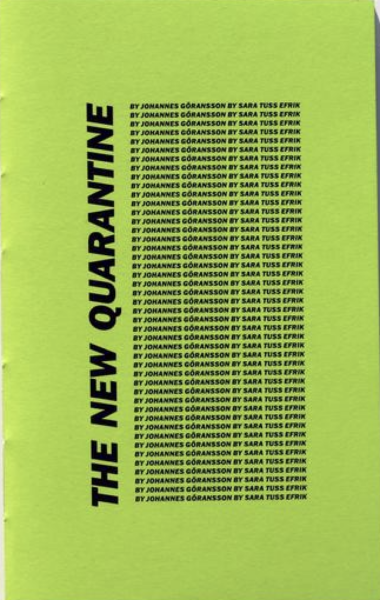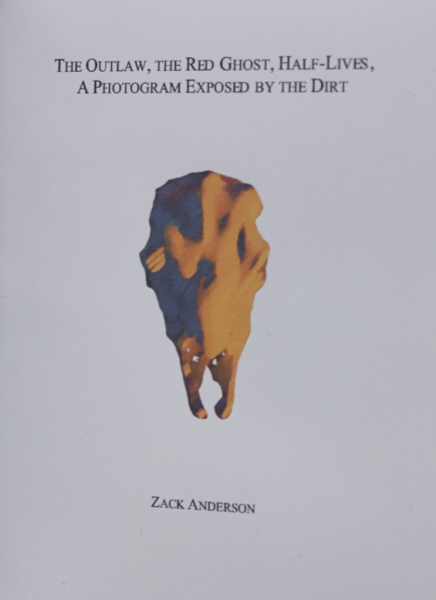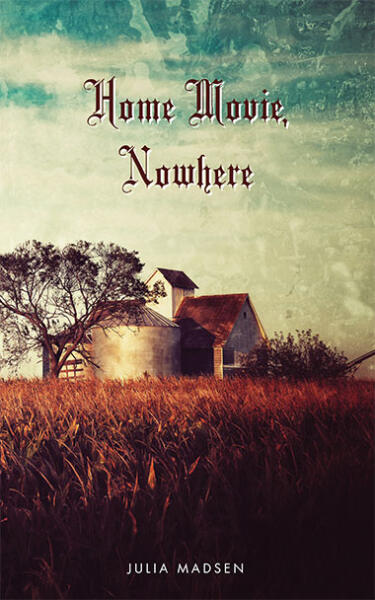The New Quarantine by Johannes Göransson by Sara Tuss Efrik
“You are searching for an entry to the poem, I am searching for an exit wound.” I often use puns in my work, but when I read definitions of “pun” it sounds like a pun must also be a joke. But my punning is not necessarily supposed to be funny. I think of Don Mee Choi’s work, a book like Hardly War (“Woe are you?”). Sianne Ngai’s Aesthetic Categories has also helped me think through this.
I’ve been thinking about punning because I just finished reading The New Quarantine (MO(O)ON, 2020). A dynamic Swedish/English punning takes place in Johannes’ now out-of-print A New Quarantine Will Take My Place (Apostrophe Books, 2007). In the original, Göransson uses the Swedish word “barn” (“child”) to create a number of puns and neologisms. Here’s a few excerpts from the original:
I would have never punctured the landscape painting without
first painting the town with nail polish.
The poem engraved on the torso should not be read.
Its obscene depiction gives us an idea
of what the architecture looked like before the fire.
My bruises are nothing without you
My barnyard is nothing without
your smile. It doesn’t even burn
And the horses escape
The “original” no longer exists. A new quarantine has taken the place of the old one.
In The New Quarantine, Sara Tuss Efrik gives Göransson’s original work the ‘automania‘ treatment. What began as an attempt to translate A New Quarantine Will Take My Place into Swedish, turned into a new kind of translation. An occult translation. An “occult contagion.” Efrik invades Göransson, saturates an environment already saturated with violence:
Welcome home, Johannes. Bury yourself in a heap of unwritten novels and mutilations. Everything. Sara Tuss Efrik will now abandon her decoding games and lock herself in Johannes Göransson’s quarantine.
After Efrik’s automanic ritual gets off the ground, after the translation “goes off” like a bomb, after all the originals get cut-up and collaged, we’re introduced to new versions of old characters in a bizarre exchange between Sara’s “I” and an unknown “you”. Eventually the “I” reveals herself to be Shirley Temple. We learn the “you” is Louise Bourgeois (which also explains this chapbook’s hordes of spiders):
And you write: Anti-Death.
And I write: Who are you?
And you write: Louise.
And you write: Who are you?
And I write: I’m Shirley. I promise. I’m Shirley. Hi.
The fact that Efrik translated A New Quarantine Will Take My Place into Swedish, only to be translated back into English by Göransson, results in intriguing mistranslation errors (a moment where it appears “döttrar”—daughters—is intentionally mistranslated as “deaders,” forming a pun). Being bilingual or multilingual gives a poet the opportunity to elevate their language(s). Joyelle McSweeney’s “hyperdiction” might be an interesting way to discuss such elevation. Having translated some of Efrik’s automanias myself, many of my own mistranslations, mistakes, errors usually give me new ideas for altering, elevating, mutating the English in my own poems.
One major difference between A New Quarantine Will Take My Place and The New Quarantine is that the roles of Shirley Temple and Louise Bourgeois (who appear in the original) feel amplified, occurring as new epistolary voices at odds with one another:
There are too many tricks in the body! In this ground zero for figurative language I will look like snow is on my eyelids. SHIRLEY WILL LOOK SPASTIC IN THE SNOW. I will show Sara how to become a new human. Sara, in this terrible spring, will become a new human, a kind of duchess next to the counterfeit staging of Shirley’s body. I will become a new human. A PROP.
Just like in the old quarantine (“MY MAKEUP HASN’T EVEN DRIED YET AND I’VE ALREADY WRITTEN A POEM ABOUT EXPERIENCE”), sudden explosions of Hannah Weiner-style utterances formatted in ALL-CAPS still function as a disrupting element in The New Quarantine.
Is Efrik re-writing the writing on the wall? What should we make of these utterances? Who are these voices?
THEY ARE YOUR DOUBLES.
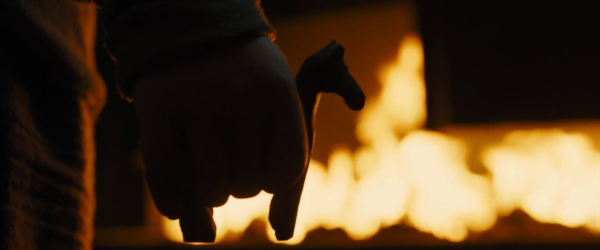
Blade Runner 2049 (2017) Directed by Denis Villeneuve
One of my favorite “contagious voices” in this chapbook appears on page 25 in the form of a sprawling manifesto of doubles, sisters, replicants:
ISOLATION IS MANDATORY
IN CASES OF SUSPECTED CONTAGION
MOIST ANIMALS
DO NOT DRY YOURSELVES
THE FEAR OF CLONES
THE TOXICITY OF ART
WILL THE QUARANTINE KEEP THE TOXIC OUT
OR WILL IT BRING YOU INTO THE POISON
IMITATION ANATOMY
THE WOODEN HORSE IS A FAKE MEMORY
THE THREAT OF FOREIGNERS WHO LOOK LIKE YOU
THE THREAT OF ART MADE BY INHUMAN
ART IS IMITATION AND INHUMAN
Welcome to The New Quarantine.
Welcome home.
The Outlaw, The Red Ghost, Half-Lives, A Photogram Exposed by the Dirt by Zack Anderson
“We put on our eclipse glasses and stared into the fire.” With extraordinary precision and an energizing philosophical sensibility, Zack Anderson’s debut poetry chapbook is a stunning new addition to what looks like a growing genre of contemporary cowboy poetry (see also Kim Gek Lin Short’s China Cowboy; Alejandro Albarrán Polanco’s Cowboy & Other Poems). In “Cuts and Fragility” Johannes Göransson suggets Polanco’s cowboy poems read like a “cut-up field that is glued together and comes apart compulsively.” In a review of China Cowboy at HTML GIANT, Sarah Heady argues that Short “expanded and fused the poetic and narrative fields, creating a zone where elegance and grace can gambol with the just-plain-fucked-up.” Interestingly, like Polanco and Short, Anderson, too, turns to the prose poem to explore violence. In many ways, the chapbook is also a response to the violence against migrants at the Mexico-United States border.
We bent the horizon into a manageable form.
Like semiologist Roland Barthes, Anderson, treating each poem as an interrelated landscape, views text as space. In “Re-Reading Camera Lucida,” Victor Burgin describes text as:
“[…] a space made up of endlessly proliferating meanings which have no stable point of origin, nor of closure. In the concept of ‘text’ the boundaries which enclosed the ‘work’ are dissolved; the text opens continuously into other texts, the space of intertextuality […] All of this, and more, belongs to the fields of what Barthes calls the ‘déjà lu: the ‘already read’, ‘already seen’, everything we already know and which the text may therefore call upon, or ‘accidentally’ evoke.”
Anderson manipulates the familiar, the déjà lu of the cowboy genre’s ‘wild west’ in order to reframe American mythologies and midwestern landscapes, emphasizing decaying skies and the real violence at imaginary borders (as well as a poem’s textual boundaries).
Anderson’s poems are also unapologetic in their ornamental grandeur:
We coughed up glittery lungfulls and wore them like golden bolos down the front of our
pearl snap shirts.
Queer country pop star Orville Peck feels like a key influence. Especially the lyrics of “Buffalo Run”:
Hitch a ride on my violence
Bring fear, got a fever in silence
Yeah, head on, rideI caught you staring at the sun
Looking out for number one
Yeah, head on, rideI saw the tail on your lips
Another truth for my fists
Yeah, head on, ride
Immediately implicating readers with a curious lyric “we”, Anderson suggests early in the chapbook that his reader might be involved with the execution of a mysterious outlaw. Later, we hear the “grassy wail” of a mysterious red ghost. Anderson’s chapbook (or “photogram”) feels like the other side of a mirror, a post-apocalyptic world where the voices of the dead rise again:
A red voice spoke what we could not distinguish from our own thoughts.
At once restrained and rhinestone-spectacular, each “trail of gas” and “pit mouth” brings us closer to unlearning imperialistic topologies in the so-called land of the free. Anderson’s prose poems challenge readers to look a little closer and consider what we’re not seeing. Fragments of a landscape in an expiring field of vision. The idea of a “blind spot” in a reader’s field of vision is also introduced in a poem titled “Punctum Caecum,”
Each time our eye focused someone else would disappear.
Like a “brittle red tooth” embedded in a piece of “yellow cake”, I promise you won’t be able to forget these poems.
Thank Wyoming for this debut chapbook from Zack Anderson!
Now available from The Magnificent Field.
Home Movie, Nowhere by Julia Madsen
“There are those hallowed moments hollowed of sound where only the nothing speaks.” Home Movie, Nowhere asks readers: what’s real/reel?
Divided into two sections (“Museum of Domestic Architecture” and “Home Movie, Nowhere”), this remarkably affecting and unsettling new chapbook from Julia Madsen will turn the meat of your world into maggots, leave your hands dirty from worms. From the River of Styx to the hissing Mississippi, this engrossing Heartland Gothic invites readers to enter a private world and bear witness.
With a prose style that feels reminiscent of James Agee’s roaming eye in Let Us Now Praise Famous Men or Truman Capote’s accounts of the Clutter house in In Cold Blood, Madsen’s speaker, embowered by memories of family, ghosts, and more, intimately explores architecture, landscape, and dream-like memories:
I will slink into a fold of memory, no, I will steal across the pastures like a steed, wandering and soulless, uncouth and barely alight, having shed the gown, having shed the skin of my skin, having known my way around here.
Such lines demonstrate how Madsen is always trying to get beneath the surface of things. Her landscapes harness many secrets, making for a chapbook readers will want to finish in a single sitting. The poet also gives us an oculo-erotic look at landscape. For instance, in one poem, the silver screen is described as a “plateau”, a highland typically described as consistently flat and straight:
I gazed at the screen like a flat expanse or plateau on which to record a feeling so familiar I could only retrieve it by looking. I watched movies like they were a kind of pornography. I saw a man jerking off. I watched him wipe cum on the bottom of his seat.
It’s interesting to hear Madsen describe a screen as plateau-like, and all movies as a kind of pornography. It reminds me of one of the descriptions of pornography in Carl-Michael Edenborg’s manifesto:
The porn consumer is looking for the errors, the clumsy, the ‘amateur’. It’s not that she loves ugliness. But she wants the exchange value to be destroyed and a covenant to be restored: the covenant with that which disturbs the symbolic order, the pornographic order.
The idea of a body is an “open order” and that’s how it’s treated in Madsen’s chapbook. The body (human or nonhuman) as a Deleuzian plateau:
A plateau is a piece of immanence. Every [Body without Organs] is made up of plateaus. Every BwO is itself a plateau in communication with other plateaus on the plane of consistency. The BwO is a component of passage.
Additionally, like Anderson’s use of a lyric “we”, Madsen, in “Museum of Domestic Architecture,” interpellates readers and provides instructions, inviting them to bear witness in a similar way. In one particular poem, parentheticals are used to prompt readers to question their experience of Madsen’s basement/cave:
How to get out of the cave? First, you turn on the lights. The lightbulb is attached to a broken string (true). With each step the light flickers (true). The cat is sleeping on the ledge (true). Inside the hatch are stairs that once led to the basement (true). You step in a pool of water (false). There is a key on the ledge—take the key.
The experience of the true/false parentheticals reminded me of what it’s like to weigh personal memory against a (true) video recording of (true) actual events (i.e. a home movie). For me, memory (true?) sometimes feels like something “realer than television,” to reference Madsen’s 2019 short film of the same name. Maybe Barthes’ déjà lu works here, too.
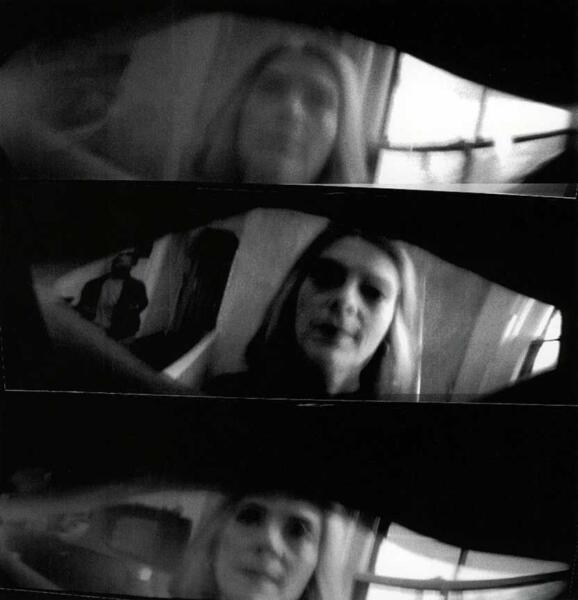
Ann Hamilton’s face-to-face (2001)
Tinged with violence, deception, and filth, Home Movie, Nowhere is about an outsider coming home. It reads like something that’s been in the back of your skull for decades, deep inside your pinhole eye, a long drive into the country, an image you can’t get out of your head, maybe an image that’s haunted you since childhood, or maybe it will feel like a most welcome light at the end of the tunnel, whatever might be waiting outside Plato’s cave, Madsen’s chapbook is “at once a maze and straight story, and the only way out is by having gone through.”
Paul Cunningham (b. 1989) is the author of the The House of the Tree of Sores (Schism2 Press, 2020) and his latest chapbook is The Inmost (Carrion Bloom Books, 2020). He is the translator of Helena Österlund’s Words (OOMPH! Press, 2019) and two chapbooks by Sara Tuss Efrik: Automanias Selected Poems (Goodmorning Menagerie, 2016) and The Night’s Belly (Toad Press, 2016). He is a managing editor of Action Books, co-editor of Radioactive Cloud, and co-curator of the Yumfactory Reading Series. He is a PhD candidate at the University of Georgia. @p_cunning
